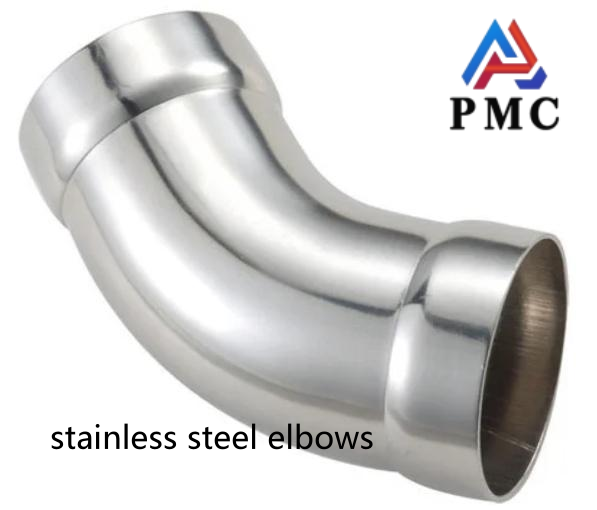
Heat Treatment of Stainless Steel Elbows
Importance of heat treatment process for stainless steel elbows
In the industrial field, stainless steel elbows are key pipe connectors and are widely used in petroleum, chemical, electric power and other industries. Heat treatment technology plays a key role in improving their performance.
From the perspective of strength, after proper heat treatment, the grains inside the stainless steel elbow are refined and the precipitation phase changes, which can significantly improve the strength and hardness, allowing it to maintain stable mechanical properties even when subjected to harsh working conditions such as high pressure and high temperature.
In chemical pipelines, high-pressure corrosive media place extremely high demands on the strength of elbows. Heat-treated stainless steel elbows can effectively avoid deformation and rupture.
In terms of corrosion resistance, heat treatment can eliminate stress and defects inside the stainless steel elbow, reduce the content of sensitive phases, and cooperate with surface oxidation, sulfidation and other treatments to enhance the surface protective layer and greatly improve its corrosion resistance. For example, in marine engineering, in the highly corrosive environment of seawater, heat-treated stainless steel elbows can effectively extend their service life.

Heat treatment process steps and methods
The heat treatment process of stainless steel elbows mainly includes three key steps: heating, insulation and cooling.
During the heating process, medium frequency or high frequency induction heating equipment is usually used. This equipment can achieve fast, efficient and uniform heating, and can effectively avoid local overheating. The heating temperature is generally controlled between 950 - 1150 degrees Celsius, but the specific value will be adjusted according to the material and composition of the stainless steel. For example, stainless steel containing more alloying elements may require higher heating temperatures to ensure that the alloying elements are fully dissolved.
The insulation link is indispensable. It can make the overall temperature of the stainless steel elbow uniform, promote the full austenitization, and help eliminate internal stress. The insulation time is determined by the size, thickness and material properties of the elbow, and generally ranges from several minutes to several hours. For example, large-sized, thick-walled elbows will require a relatively long insulation time.
The cooling method has a significant impact on the final performance of the stainless steel elbow. Common cooling methods include air cooling and water cooling. The air cooling speed is relatively slow, which can fully transform the internal structure of the elbow and obtain a more uniform structure and performance. It is often used in scenes that require a relatively balanced hardness and toughness. Water cooling is extremely fast and can quickly transform austenite into martensite and other structures, greatly improving the hardness and strength of the elbow, but it may cause greater internal stress. It is suitable for special working conditions with extremely high requirements for hardness and strength and relatively low requirements for internal stress.
Heat treatment process has an important influence on its performance
1. Strength and hardness: The strength and hardness of stainless steel elbows can be improved through proper heat treatment process. For example, quenching can make the stainless steel elbow reach a higher hardness, improve its wear resistance and tensile strength, and is suitable for some occasions with high strength and wear resistance requirements.
2. Corrosion resistance: One of the main characteristics of stainless steel elbows is corrosion resistance. Through appropriate heat treatment process, the grain structure and chemical composition distribution of stainless steel can be improved, its corrosion resistance can be improved, and its service life in corrosive environment can be extended.
3. Plasticity: The heat treatment process will also affect the plasticity of the stainless steel elbow. By adjusting the heat treatment parameters, the grain structure and organizational state of stainless steel can be changed, affecting its plasticity and cold working properties. Appropriate heat treatment process can maintain the good plasticity of the stainless steel elbow, making it easy to process and shape.
4. Dimensional stability: Stainless steel elbows may undergo dimensional changes during heat treatment, affecting their accuracy and stability. By controlling the temperature and cooling rate during heat treatment, the dimensional change of the stainless steel elbow can be reduced and its dimensional stability and processing accuracy can be improved.
5. Residual stress: Residual stress will be generated during the heat treatment process. If the residual stress is too large, it may affect the performance and stability of the stainless steel elbow. Therefore, appropriate measures need to be taken during the heat treatment process, such as adjusting the annealing temperature and cooling method, to reduce the generation of residual stress and ensure the stability and reliability of the stainless steel elbow.
Read more: Impact and Seismic Design of Stainless Steel Elbows: System Stability


